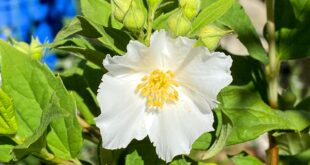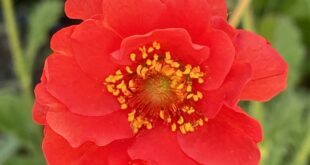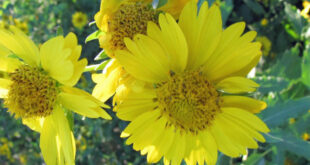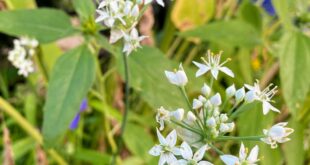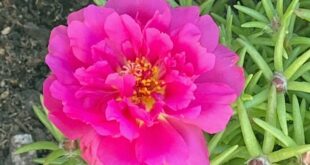Consult any book on heirloom garden plants and you will certainly find Philadelphus listed prominently. They are a group of plants that exude old-fashioned charm. This hybrid of uncertain parentage from the 1900’s fills the garden mid-Spring through mid-Summer with an alluring and far-carrying scent of BUBBLEGUM! Much less cloying, in my opinion, than the citrusy smell of its cousins. …
Read More »Flowers
Geum ‘Blazing Sunset’
Welcome, garden enthusiasts! Today, we’re diving into the world of vibrant perennials to spotlight a true showstopper in the garden: the Geum ‘Blazing Sunset’. This fiery beauty is a must-have for any gardener looking to add a splash of color and a touch of drama to their outdoor space. A Burst of Scarlet Brilliance The Geum ‘Blazing Sunset’ is renowned …
Read More »Sweet Alyssum
The Sweet Scent of Success: Growing Sweet Alyssum in Your Garden Gardening enthusiasts often seek flowers that are not only visually appealing but also easy to grow and beneficial for the environment. Sweet alyssum, with its delicate blooms and honey-like fragrance, ticks all these boxes. In this blog post, we’ll explore the charm of sweet alyssum and how you can …
Read More »Verbesina encelioides
If you are looking for a cheerful and easy-to-grow flower that can thrive in dry and sunny conditions, you might want to consider verbesina encelioides. Also known as golden crownbeard, gold weed, or wild sunflower, this annual plant belongs to the aster family and is native to many parts of the United States and Mexico. Verbesina encelioides produces masses of …
Read More »Teucrium fruticans azureum
Teucrium fruticans azureum (Bush Germander) is a reliable foliage and flowering accent plant. It develops into a large evergreen shrub, 4-8 ft. high, spreading 8-10 ft. across. Distinctive foliage is gray-green above with silvery white hairs beneath. Colorful pale lavender flowers are heaviest in winter to early spring and intermittently throughout the year. Bush germander comes from rocky slopes in …
Read More »Salvia microphylla ‘Dazzler’
Dazzler is a compact new hybrid with deep intense rose red flowers, glossy, bluish foliage, dark stems and sepals and long bloom season. The plant has a compact and bushy habit, with a height and spread of 24-36 inches. It produces showy flowers in shades of purple-red that bloom from spring to late fall or early winter. The flowers are …
Read More »Dwarf Crape Myrtle
Petite Red Imp TM Crape Myrtle (Lagerstroemia indica ‘Monimp’) is a dwarf variety of a popular, showy deciduous shrub that displays a profusion of deep crimson blossoms from summer to fall. Distinctive bark has a smooth, attractive texture. Excellent when massed in single-color plantings, or used as an individual accent. Perfect for bringing color and texture to small spaces. Thrives …
Read More »Allium
Most of us don’t think of onions as beautiful plants, but onions have some very close cousins that definitely deserve a place in your flower garden. Fast-growing ornamental alliums grow tall and have round flower heads composed of dozens of star-shaped flowers. While these plants are not edible, their leaves do have a slight onion-like scent when crushed. Ornamental alliums …
Read More »Moss Rose
Moss rose, Portulaca grandiflora, is a drought and heat tolerant annual native to hot, dry plains in Argentina, southern Brazil, and Uruguay. This herbaceous plant in the purslane family (Portulacaceae) is cultivated throughout the world as a garden annual for its showy flowers that bloom all summer long with little care. It is related to the weed purslane (P. oleracea), …
Read More »Hollyhock ‘Double Apricot’
Big super-duper double pom-poms of peachy-apricot, 4-5” across, are densely stacked all around the stalk for maximum impact. So beautiful! Imagine these next to a garden gate or low fence or standing tall mid to back of bed. Cottage garden nirvana! To 6-8’ and branching. Biennial, they’ll bloom the first season if planted in Spring in temperate climates like ours. …
Read More »